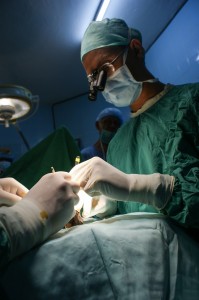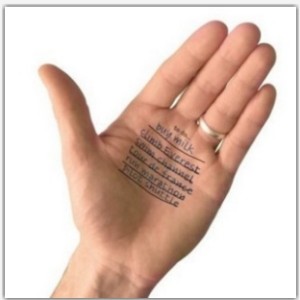 MICROSURGERY
MICROSURGERY
I remember at a conference in Philadelphia a well-known colleague of Cincinnati saying “A day with microsurgery is a day with a sunshine”
I think this is one of the most interesting activity for a hand surgeon, especially if the microsurgeon loves to rebuild/reconnect any damaged structure after a traumatic event or restoring sensitivity after a transient period. Any body part working but without sensitivity is useless and can be hardly moved because a good sensitivity helps movements.
The aesthetic and more often the functional result of a body part repositioned in the same location where It was initially remains unbeatable compared to any artificial solution also for the psychological influences in terms of body image manteinance.
For the aforementioned reason if indicated and in the absence of contraindications, everything must be done immediately and quickly to restore the integrity of distal parts of the patient. The sense of social exclusion and segregation due to an accident should be prevented in the 20th century.
Six hours is the average maximum time allowed for replanting a limb previously amputated. The final result depends on the first diagnostic and therapeutic approach as secondary corrections will never give a complete “restitutio ad integrum” .
Our statistics say that more often hand injuries arrive in the emergency room in the late afternoon, so these lengthy procedures usually end in the late evening or in the night. For these reasons, the training to learn these techniques must be done in centers of excellence and for long periods of time to refine the techniques and get used to these rhythms.
Reconstructive microsurgery is useful while dealing with finger or limb replantations, transplantation of vascularized tissues from a donor, nerve sutures, nerve transplants, transfers of nerves or vessels, soft tissues losses as a result of accidents, cancer or skin diseases.
VASECTOMY REVERSAL
 A vasectomy is considered a permanent method of birth control. A vasectomy is a minor surgical procedure in which the sperm duct, or vas deferens, is cut in order to achieve sterility. Vasectomy reversal (vasovasostomy) restores fertility by reconnecting the ends of the severed vas deferens, which is located in each side of the scrotum, or by connecting the vas deferens to the epididymis, the small organ on the back of the testis where sperm matures. These procedures restore the passage for sperm to be ejaculated out the urethra with microsurgical technique.There are many reasons to reverse a vasectomy like remarriage following a divorce or having a change of heart or starting a family over after the loss of a wife or child. Regardless of your reason, there are now advanced methods to restore your fertility. Vasectomy reversal is usually an outpatient procedure requiring fine microsurgical skills and a particular training. Spinal or general anesthesia is commonly used to ensure that you stay completely still during the surgery.The chances of vasectomy reversal success depend on how much time has passed between the vasectomy and the reversal. Over time, additional blockages can form, and some men develop antibodies to their own sperm.The surgery is more complicated and takes more time when blockage between the vas deferens and the epididymis requires correction (vaso-epididymostomy).
A vasectomy is considered a permanent method of birth control. A vasectomy is a minor surgical procedure in which the sperm duct, or vas deferens, is cut in order to achieve sterility. Vasectomy reversal (vasovasostomy) restores fertility by reconnecting the ends of the severed vas deferens, which is located in each side of the scrotum, or by connecting the vas deferens to the epididymis, the small organ on the back of the testis where sperm matures. These procedures restore the passage for sperm to be ejaculated out the urethra with microsurgical technique.There are many reasons to reverse a vasectomy like remarriage following a divorce or having a change of heart or starting a family over after the loss of a wife or child. Regardless of your reason, there are now advanced methods to restore your fertility. Vasectomy reversal is usually an outpatient procedure requiring fine microsurgical skills and a particular training. Spinal or general anesthesia is commonly used to ensure that you stay completely still during the surgery.The chances of vasectomy reversal success depend on how much time has passed between the vasectomy and the reversal. Over time, additional blockages can form, and some men develop antibodies to their own sperm.The surgery is more complicated and takes more time when blockage between the vas deferens and the epididymis requires correction (vaso-epididymostomy).
Vasectomy reversal usually takes 2 hours, followed by a few more hours for recovery from the anesthetic. The microsurgical approach is recommended and uses a high-powered microscope to magnify structures from five to 40 times their actual size. Use of an operating microscope provides better results, as it allows the surgeon to manipulate stitches smaller in diameter than an eyelash to join the ends of the vas. When microsurgery is used, vasovasostomy results in return of sperm to the semen in more than 90 percent of patients.
We use special attention to the postoperative pain so It’s usually mild, comfortable and well tolerated. We suggest rest for 2-3 days and You should be able to resume normal activities, including sex, within 3 weeks. You will be advised to wear a jockstrap for support for several weeks.
Chances of a successful vasectomy reversal decline over time.
The physician will request a semen analysis every two to three months after surgery until your sperm count either stabilizes or pregnancy occurs. Unless a pregnancy occurs, a sperm count is the only way to determine surgical success. While sperm generally appear in the semen within a few months after a vasovasostomy, it may take from three to 15 months to appear after a vasoepididymostomy.
Reversals are more successful during the first 10 years after vasectomy with the greatest chance of success being within 3 years of the vasectomy.
In general, vasectomy reversal leads to overall pregnancy rates of greater than 50% but leads to pregnancy only about 30% of the time if the reversal is done 10 years after vasectomy
It takes on average one year to achieve a pregnancy after a vasectomy reversal. Some pregnancies occur in the first few months after the reversal procedure, while others do not occur until several years later.
Before a vasectomy reversal is done, your doctor will want to confirm that you were fertile before your vasectomy.
You can have tests to see whether you have sperm antibodies in your semen before and after vasectomy reversal. If there are sperm antibodies in your semen after surgery, your partner is unlikely to become pregnant. In such a case, you may wish to try in vitro fertilization with intracytoplasmic sperm injection.
HYPERHIDROSIS
 Hyperhidrosis is a condition characterized by increased sweat production compared to the amount useful to maintain adequate body temperature. Among the forms of localized hyperhidrosis it is worsened by emotional stress-emotional and /or thermal stimuli.
Hyperhidrosis is a condition characterized by increased sweat production compared to the amount useful to maintain adequate body temperature. Among the forms of localized hyperhidrosis it is worsened by emotional stress-emotional and /or thermal stimuli.
It appears during childhood or adolescence, reaching a peak around 30-40 years.
It often causes embarrassment and not secondary difficulties while working with loss of self-esteem, and although it may involve all body surfaces, one of the most affected region is the hand.
Over time, there have been proposed treatments such as homeopathy, massage, acupuncture and physiotherapy, but with little benefits.
It has recently been suggested that botulinum toxin type A is an effective treatment. Botulinum toxin is a peptidase blocking the release of acetylcholine at the level of parasympathetic postganglionic synapses; all this results in a drastic reduction of the production of sweat.
The effect of botulinum toxin, in some particular points of the palms, is transient and lasts about 6 months, but it is a safe and easy solution with an improvement in quality of life and relationships.


